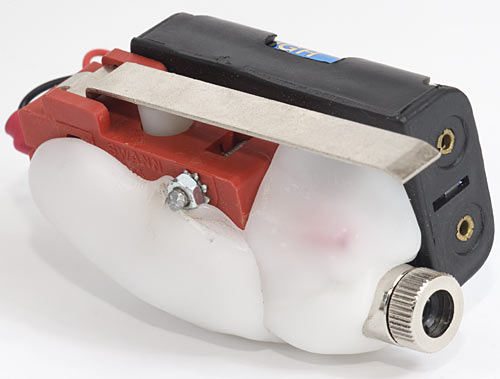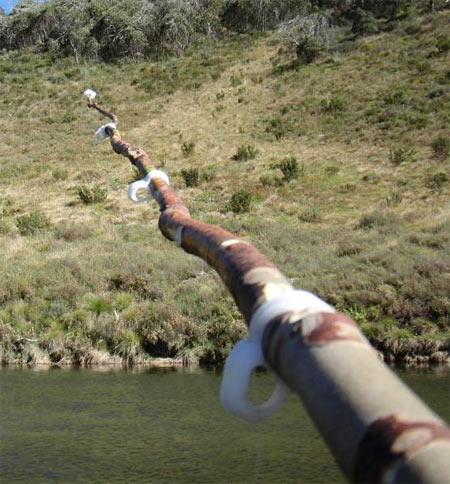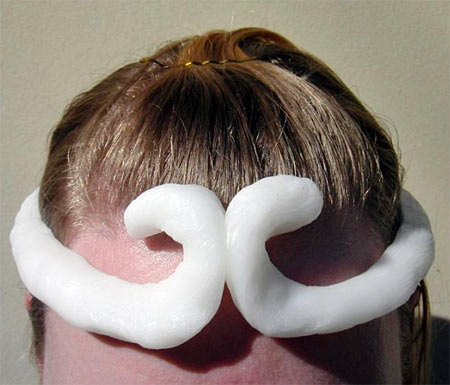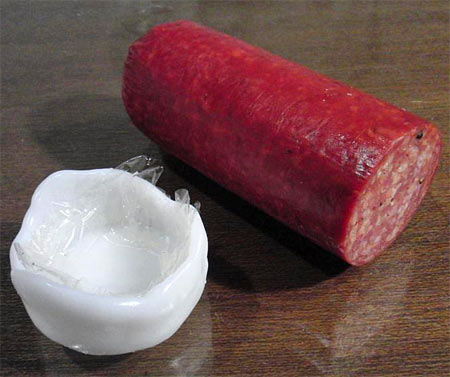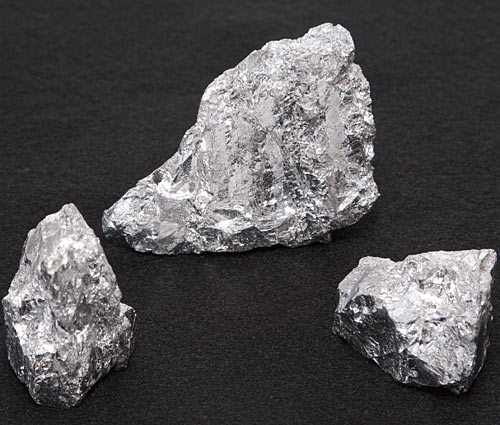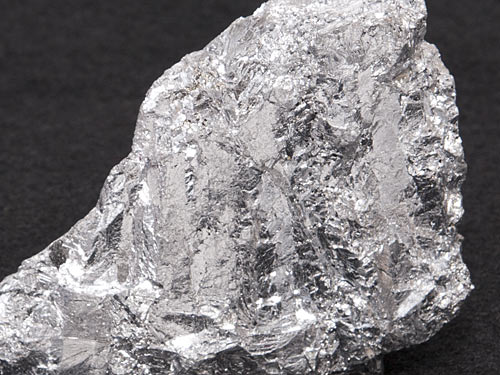A reader writes:
The last time I used an infrared thermometer it was in a lab at university, and the thing was the size of a shoebox and cost thousands of dollars. I don't know why it took me so long to discover that now they cost fifty dollars, but I did, so obviously I bought one because at that price why not.
I've been having a lot of fun seeing what temperature my walls and ceilings and floors and computers and pets are at, but some things confuse me. The sky, for instance, reads around 5°C when it's overcast (ambient ground-level temp about 15°C), but when it's clear the sky reads about -50°C, day or night. Thanks to the University of Wikipedia I know that the thermosphere is very sparse but can be very hot, and the mesosphere below it is around -90°C; is the minus 50 just averaging those out?
Also, when I shoot the side of a saucepan with boiling water in it, I get a reading of only maybe 50 or 60°C, even if I'm shooting a part that's above the water line and clearly above 100°C because if I slosh the water around it hisses when it touches the inside of that part. What's up with that?
Pablo
The non-contact infrared thermometer is, indeed, a fantastic tool, and toy. Cheap ones usually aren't pinpoint accurate and may be quite severely inaccurate outside their specified temperature range; a -35-to-230°C cheapie, for instance, may still give numbers well outside that range, but shouldn't be trusted.
But as you say, point-and-shoot temperature measurement for under $100 is pretty darn fantastic, even with caveats.
Actually, the absolute lowball price for IR thermometers on eBay these days is less than ten US dollars, including delivery. (The same search on eBay Australia, for any Aussies for whom the "geotargeting" for the other search doesn't work.) You've got to wonder how accurate a $7.50 thermometer can possibly be, and the cheapest ones also run from little button batteries that may not last very long, but I still think a sub-$10 IR thermometer you can put on your keyring qualifies as Living In The Future.
(Most non-contact thermometers have a laser sight, too, allowing you to entertain your cat while you measure its temperature.)
What these thermometers actually measure is lower-frequency thermal radiation. Thermal radiation is light, and can be of high enough frequency to be visible to the human eye - red-hot metal, tungsten light-bulb filaments, et cetera. What people usually mean when they refer to thermal radiation, though, is invisible long-wavelength infrared light. Cheap non-contact thermometers all measure medium-to-long-wave IR, with wavelengths in the neighbourhood of ten micrometers (µm, often written as "um" to avoid the hard-to-type Greek letter Mu).
I think the most common wavelength specification is "8-14um", which includes, according to a common definition, the very bottom of the mid-wavelength band and almost all of the long-wavelength band.
(Medium-infrared is a few octaves below the 700-to-800-nanometre near-infrared that human eyes can actually detect, if it's bright enough. I've made both versions of those IR goggles, by the way; they work great!)
There are three factors that can throw off this sort of temperature reading.
The first is the emissivity of whatever you're pointing the thermometer at. There's no such thing as a pure black-body radiator outside Physics Experiment Land; for this reason, no real substance emits as much IR at a given temperature as it should, though many substances are pretty close. Consumer IR thermometers just make a guess about emissivity; I think most of them are calibrated for an emissivity of 0.95.
Fancier IR thermometers, like this $AU189 one for instance, not only have a wider temperature range and higher accuracy, but also let you correct for emissivity and even the distance to the target, which is the second factor that's affecting your temperature readings. The distance-to-target matters because air emits IR like everything else does; it doesn't emit much of it, because of its low density, but the more air there is between your thermometer and its target, the more the temperature of that air will skew the reading.
(The cheapest eBay thermometer I've found that claims to offer emissivity adjustment is the one found by this search, for £29.99 delivered, which is about $US48 or $AU46, as I write this.)
Emissivity is a much bigger factor than distance to target for most readings, though. Look, for instance, at the emissivity list here, or the bigger one in this PDF. Some things - unfinished wood, clay, human skin - have emissivity well above 0.9. Other things - polished metals, in particular - have extremely low emissivity, of 0.1 or less. Even rough-finished and/or oxidised metal commonly has an emissivity of less than 0.7.
What this means is that it's very difficult to get an accurate reading if you point an IR thermometer at metal cookware. Even if it's black cast iron you'll get too-low readings from a cheap IR thermometer that assumes an emissivity of 0.95, and if your cookware is shiny stainless steel, you'll have no chance.
The third confounding factor is that when you're not reading the temperature of the actual object - and if you're pointing your thermometer at a shiny stainless saucepan with an emissivity of 0.1, you're pretty close to not measuring the saucepan's temperature at all - you can easily be mainly reading the temperature of something else whose mid-IR emissions are reflecting off the actual object. Essentially, you have to treat all metal objects, in particular, as if they're plated with mirror-polished chrome, and think of what you'd see reflected in them if that were the case.
You can minimise this problem by always keeping the thermometer's line of sight as close as possible to perpendicular to the surface of any low-emissivity objects, but even this won't help much if the object is curved, like the side of a saucepan. For reflective low-emissivity targets, a perpendicular shot will mainly tell you the temperature of the thermometer itself.
(If you want to use your IR thermometer to find hot spots around your car engine, or help you tune a tiny model engine with better thermal resolution than you can get from the spit test, you're not going to get good numbers by shooting the bare metal. A spot of matte-black paint or chalk on the head ought to give you decent results; high-temperature tape made from Kapton or Mylar won't curl up or melt at model-engine temperatures, but it has very low emissivity with most backing materials. Fibreglass tape might perhaps work, since glass generally has quite high emissivity.)
Water and ice have an emissivity above 0.9 and are opaque to medium- and longer-wave IR, so you'll get accurate temperature numbers if you point your thermometer into a pan of water, even if you can clearly see the bottom of the shiny pan in the visible spectrum. This goes for the water in clouds, too; there's a lot of air with invisible but high-IR-emissivity water vapour in it between you and the cloud, but if you point your thermometer at a cloud and get a reading of 5°C, that's probably pretty accurate.
(Clouds themselves can be seen because they're made of tiny liquid water droplets, not water vapour.)
When you shoot your thermometer at the empty sky, especially at night, you'll probably get the lowest reading that your thermometer can manage - commonly -50 or -60°C (-58 or -76°F). As I've mentioned before, all that's between you and the near-absolute-zero temperature of deep space, when the sky is clear, is air, and whatever dust and water vapour it happens to be carrying. The result is very little mid-IR light, and very low IR-thermometer readings. Even with the whole thickness of the atmosphere between you and space - or, if you're not shooting straight up, considerably more than the vertical thickness of the atmosphere - you'll still probably get as low a reading as your thermometer can deliver.
Digital cameras, by the way, can see near-infrared very well; their sensors are actually more sensitive to it than they are to visible light. (Film cameras are different; film tends to be more sensitive to ultraviolet than visible light.)
For this reason, all normal digicams have an IR-blocking filter in front of the sensor, to stop infrared, generally detected in counterintuitive ways by the differently-filtered photosites on the sensor, from giving all of your pictures weird colour casts.
Psycho Science is a regular feature here. Ask me your science questions, and I'll answer them. Probably.
And then commenters will, I hope, correct at least the most obvious flaws in my answer.
